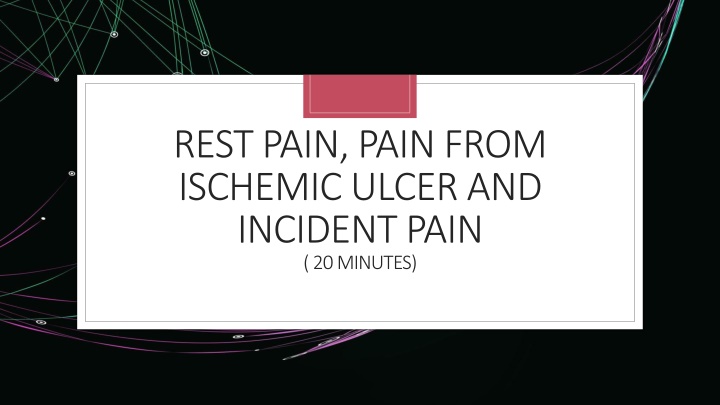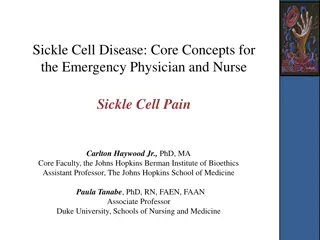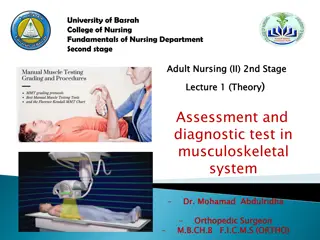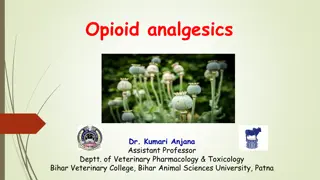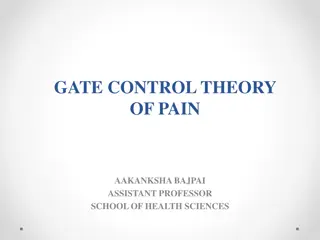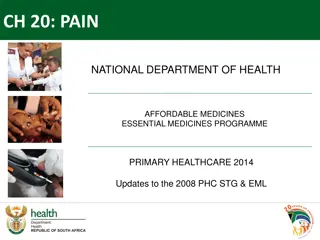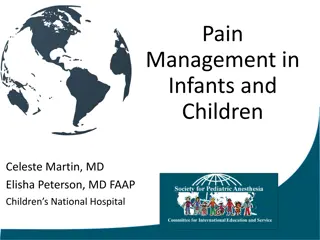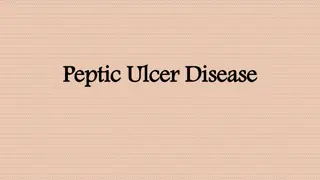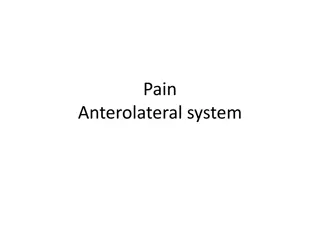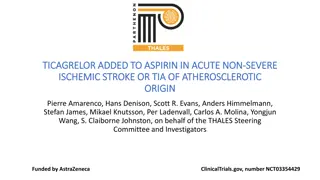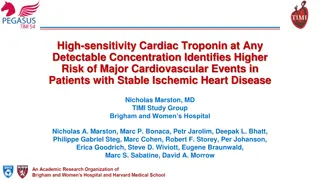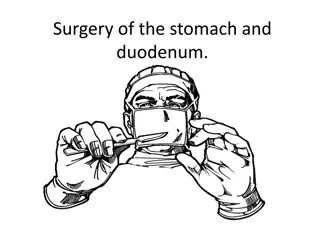Ischemic Ulcer Pain Management
Ischemic ulcer pain can be managed through various strategies such as cessation of smoking, blood pressure control, protective wound dressing, and more. Patients with claudication may benefit from exercise programs. Proper pain relief and wound care are essential in treating ischemic ulcers. Explore effective methods to alleviate pain and improve overall quality of life for individuals with ischemic ulcers.
Download Presentation

Please find below an Image/Link to download the presentation.
The content on the website is provided AS IS for your information and personal use only. It may not be sold, licensed, or shared on other websites without obtaining consent from the author.If you encounter any issues during the download, it is possible that the publisher has removed the file from their server.
You are allowed to download the files provided on this website for personal or commercial use, subject to the condition that they are used lawfully. All files are the property of their respective owners.
The content on the website is provided AS IS for your information and personal use only. It may not be sold, licensed, or shared on other websites without obtaining consent from the author.
E N D
Presentation Transcript
REST PAIN, PAIN FROM ISCHEMIC ULCER AND INCIDENT PAIN ( 20 MINUTES)
Pain in Progressive Peripheral Arterial Disease Chronic critical limb ischemia from chronic under-perfusion of a limb Claudication pain Ischemic pain at rest, Nonhealing ulcerations Gangrene Ischemic rest pain or tissue loss indicates a bad prognosis
Ulcer Pain Ischemic (arterial) ulcers cause painful ulcerations on the lower extremities The ulcers typically have a dry punched-out appearance. Ulcers usually located on the distal lower extremities at sites of trauma or pressure, including the toes, feet, lateral malleoli, and pretibial areas. Ulcer pain is worse at night and relieved by dependency.
Incident Pain Breakthrough pain related to a specific activity, such as Pain on movement Pain in cleaning and dressing a wound
Insomnia Fatigue Factors worsening Pain Tolerance Anger Sadness Depression Boredom Mental isolation
Pain decreased Sleep Relief of other symptoms Companionship Creative activity Elevation of mood Relaxation Factors improving Pain Tolerance
Patients with claudication may benefit from an exercise program. High-intensity walking exercise: Walking exercise that induces ischemic leg symptoms Low-intensity walking exercise: Walking which does not induce ischemic symptoms Claudication Pain The optimal intensity of exercise is uncertain.
1. Cessation of smoking 2. Control of blood pressure, 3. Control of hyperlipidemia 4. Control of diabetes. 5. Avoid elevation of the extremity, compression, and debridement of ulcers. Management of Ischemic Pain -Basics 6. Protective wound dressing to reduce the risk of trauma or infection. 1. Wound should be lightly wrapped with a bulky dry gauze bandage, avoiding excess pressure 7. Ensure adequate pain relief, local wound care, and treatment for any secondary infection
The World Health Organization analgesic ladder, developed for treating cancer-related pain, can give partial relief for rest pain and ulcer pain. Topical or local anaesthetics (Lignocaine/ Bupivacaine) can be used for ulcer pain, but may have limited effect. Pharmacological Management of Ischemic Pain Gabapentin ( 900 1800 mg/ day) is helpful in rest pain. Maybe because ischemic pain may include a component of neuropathic pain, possibly as a result of ischemia to the sensory nerve Low-dose Ketamine ( 0.1 0.2 mg/ kg ) sublingual/ oral/ intramuscular/intravenous can supplement analgesia from NSAID or opioids.
Severe transitory increase in pain on the baseline of moderate-intensity or less Caused by movement, positioning, bowel movement, cough, wound dressing, etc Management: Low dose Ketamine sublingually: 10-25 mg ( 0.25 to 0.5 ml of 50mg/ ml ) Fentanyl ( 0.5 ml sublingually) Fentanyl lollypop as an expensive option Parenteral opioids 1-1.5 mg Morphine intravenously every 10 minutes till pain relief 1 g/kg of intravenous Fentanyl Incident Pain
